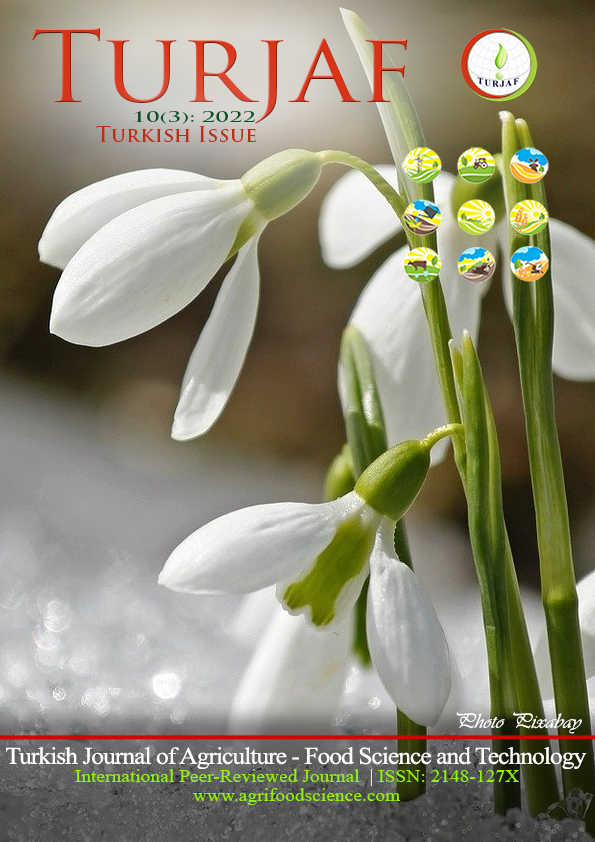Effect of Using Under Sieve Beans in Growing Quail Diets on Performance, Carcass Traits and Some Serum Parameters
DOI:
https://doi.org/10.24925/turjaf.v10i3.459-463.5123Keywords:
Bıldırcın, Elekaltı fasulye, Performans, Karkas, SerumAbstract
In the current research, it was aimed to determine the effect of the use of under sieve beans, which are not suitable for human consumption, in the diets of growing quails on performance, carcass, and serum parameters. For this purpose, a total of 240-day-old quail chicks were randomly distributed to 6 treatment groups with 40 quail chicks in each, with 4 replicates. In the study, quails were fed with 6 different treatment diets containing 0, 20, 40, 60, 80, or 100 g/kg of under sieve beans. The results of the study demonstrated that the feed intake, mortality, carcass yield, thigh+drumstick, breast, liver, heart weights and serum triglyceride, cholesterol, total protein, albumin, globulin, creatinine, and urea levels of quails were not affected by the use of under sieve beans in the diet. The body weight, body weight gain, and feed conversion ratio were considerably affected by the treatments and the best results in terms of these parameters were obtained in the group using under sieve beans at the level of 40 g/kg. Compared to the control group, pancreas weight increased in the 80 and 100 g/kg under sieve bean groups, while abdominal fat weight decreased in the 100 g/kg under sieve bean group. Serum glucose level increased significantly with the use of under sieve beans in the diet. The serum amylase level, on the other hand, was minimum with the use of 100 g/kg of under sieve beans in the diet. According to the results obtained, it can be said that raw under sieve beans could be used at the level of 40 g/kg without any adverse effects in growing quail diets.Downloads
Published
16.03.2022
How to Cite
Çaldağı, C. Şamil, & Yıldız, A. (2022). Effect of Using Under Sieve Beans in Growing Quail Diets on Performance, Carcass Traits and Some Serum Parameters. Turkish Journal of Agriculture - Food Science and Technology, 10(3), 459–463. https://doi.org/10.24925/turjaf.v10i3.459-463.5123
Issue
Section
Research Paper
License
This work is licensed under a Creative Commons Attribution-NonCommercial 4.0 International License.









